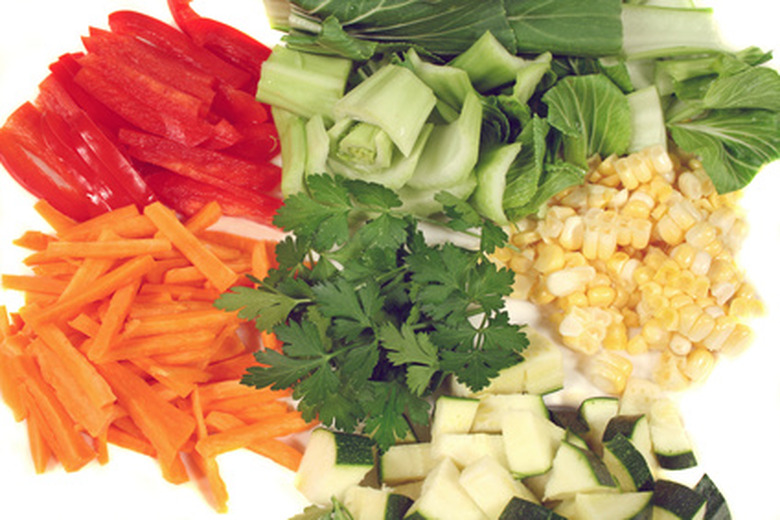What Vegetables Grow In Arizona From August To December?
The desert climate of southern Arizona is a draw for gardeners because there are two distinct growing seasons. The first is the spring-summer season that runs from the end of frost danger in February until the summer heat begins to cause stress for vegetable plants in June. The second season runs from August through December.
Many Arizona gardeners prefer the second season, according to the Arizona Cooperative Extension Service, because the days are warm enough in August, September and early October to encourage rapid germination, but cool enough in November and December that developing plants do not suffer. The heat of late spring and early summer can put a lot of stress on vegetables just as they are trying to produce, and require significantly more water than the fall garden will.
Lettuce
All varieties of loose-leaf lettuce are suitable fall crops. Head lettuce can take too long to be ready for harvesting in an autumn garden. Loose leaf can be ready 40 days after planting. Start the lettuce crop in small paper cups or seed trays in August so you can keep the tender seedlings out of the sun during the most intense heat of the day. By late September you will be ready to transplant the seedlings to your garden plot. Mixing lettuce varieties within rows adds color to your garden as well as good tasting produce.
- The desert climate of southern Arizona is a draw for gardeners because there are two distinct growing seasons.
- Head lettuce can take too long to be ready for harvesting in an autumn garden.
Leafy Greens
Chard, kale, spinach and mustard greens. These vegetables are key components of a healthy diet and grow extremely well in cooler weather. You can grow these from seed or purchase small plants in trays from the local nursery or garden store. In a mild winter, these plants can possibly keep providing leaves for your dinner table right up until the start of the spring growing season.
Root Vegetables
Carrots, beets, rutabagas and parsnips are staples of a "comfort food" supper during the holidays or the year's first cold snap. As November rolls around and the sun becomes less intense, keep the soil around your plants warmer by placing clear plastic between the rows. This is the same method commercial vegetable growers use.
- Chard, kale, spinach and mustard greens.
- Carrots, beets, rutabagas and parsnips are staples of a "comfort food" supper during the holidays or the year's first cold snap.
Peas and Beans
Choose the most rapidly growing varieties. You can plant in August and begin enjoying your first crop as early as October. Your autumn crop of snap peas can be particularly sweet and delicious. Before you plant any of your second season vegetables, take time in July to add nutrients to the soil and turn the soil thoroughly to mix it all together. Peas and beans are crops that many gardeners grow each season. It is good to practice crop rotation from season to season–moving crops to different areas of the garden–so organisms that harm plants won't get established in the soil.
Broccoli and Cauliflower
Gardeners who prefer to stay out the harsh summer sun in June, July and August often take that time to look through seed catalogs and purchase the most interesting seed varieties and do a garden plan on paper showing where each crop will be planted. Broccoli and cauliflower planted by seed in August will start forming flower heads by November and may be ready for a first harvest by late December. Cauliflower is naturally green. Tie the leaves over the head to blanch the head white. The edible parts of broccoli plants are the immature flower buds. Hot weather causes the buds to blossom into yellow flowers and the flavor deteriorates. Cooler weather means a longer harvest period for this vegetable.
- Choose the most rapidly growing varieties.
- Gardeners who prefer to stay out the harsh summer sun in June, July and August often take that time to look through seed catalogs and purchase the most interesting seed varieties and do a garden plan on paper showing where each crop will be planted.
